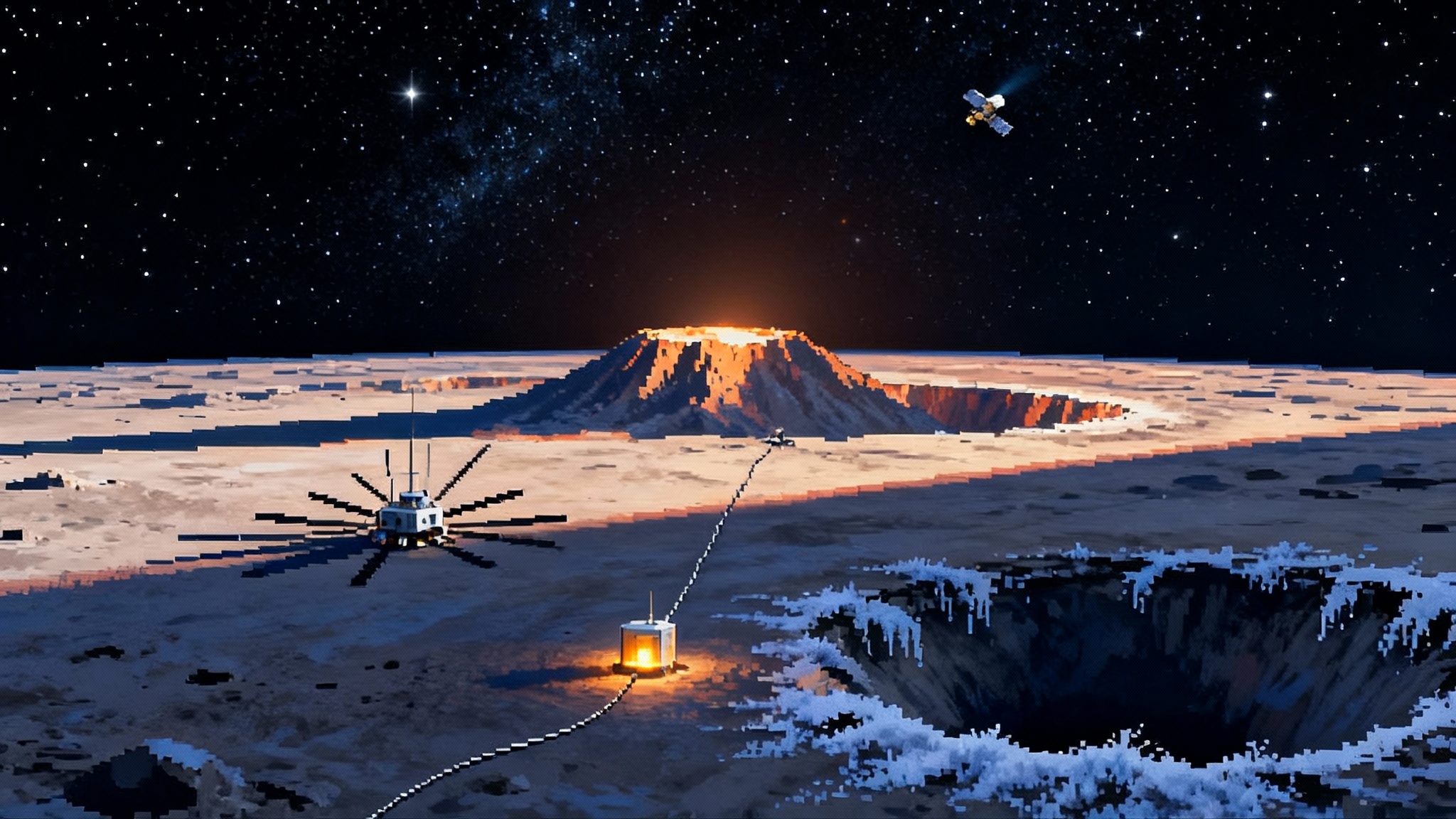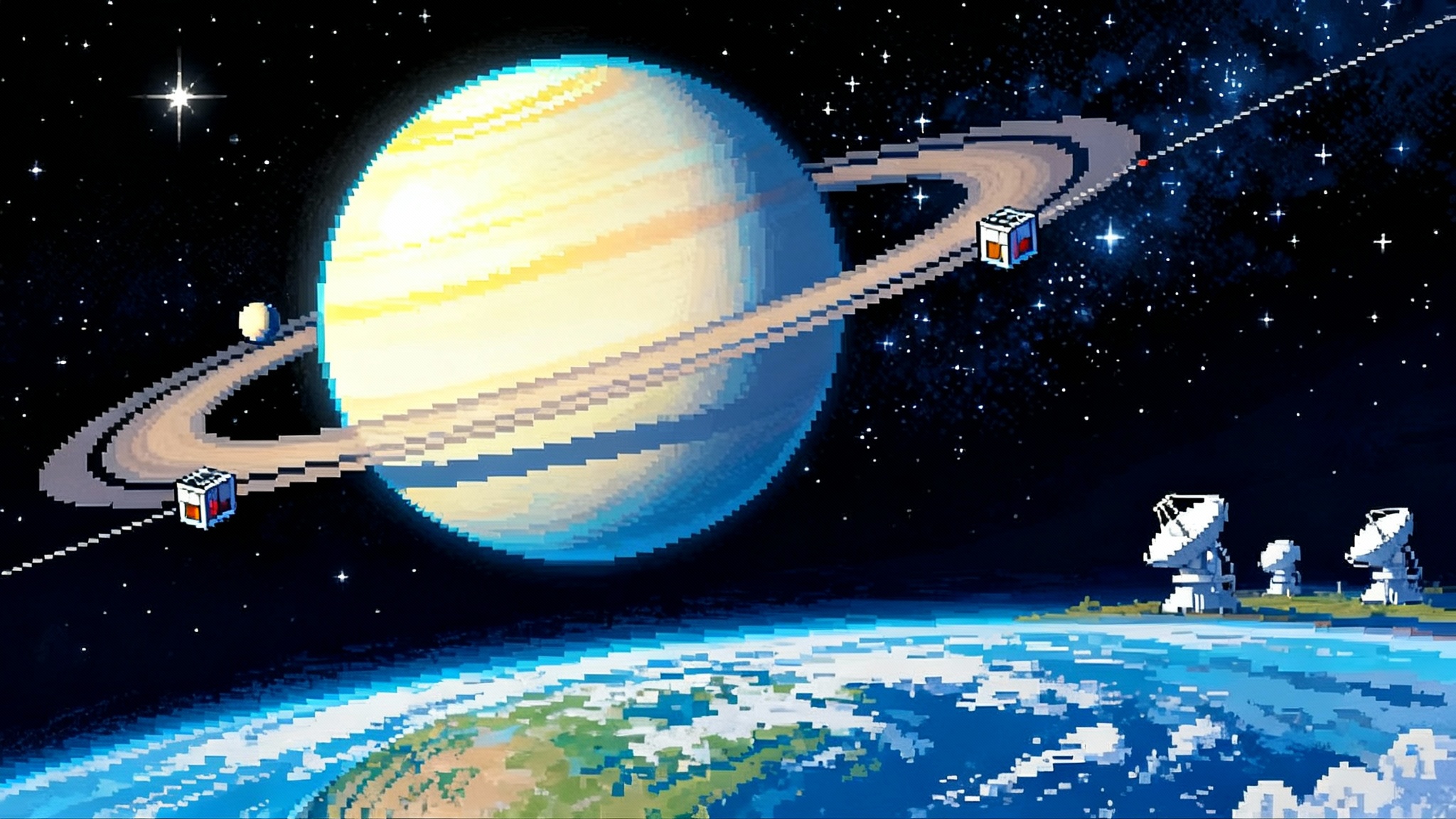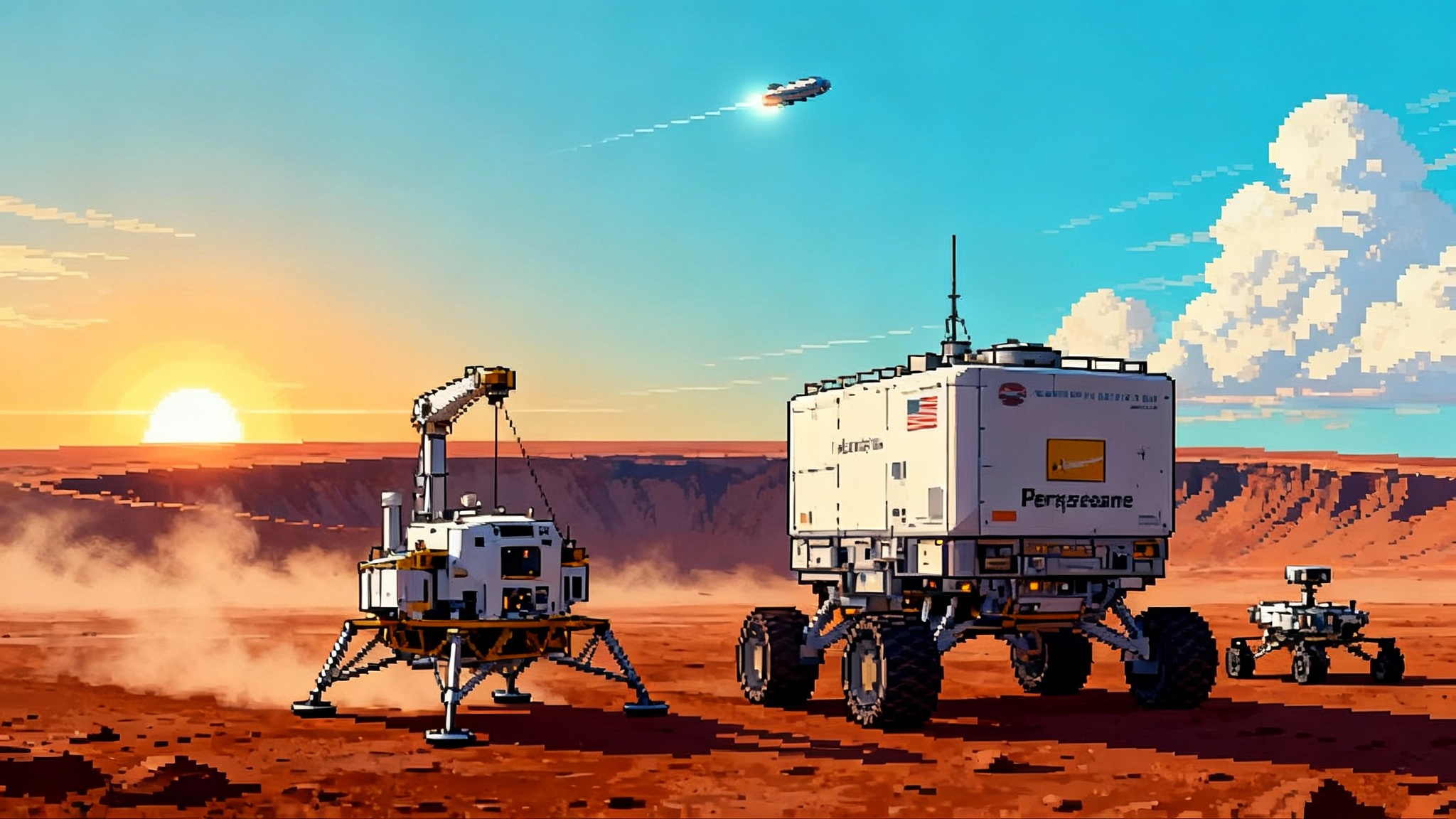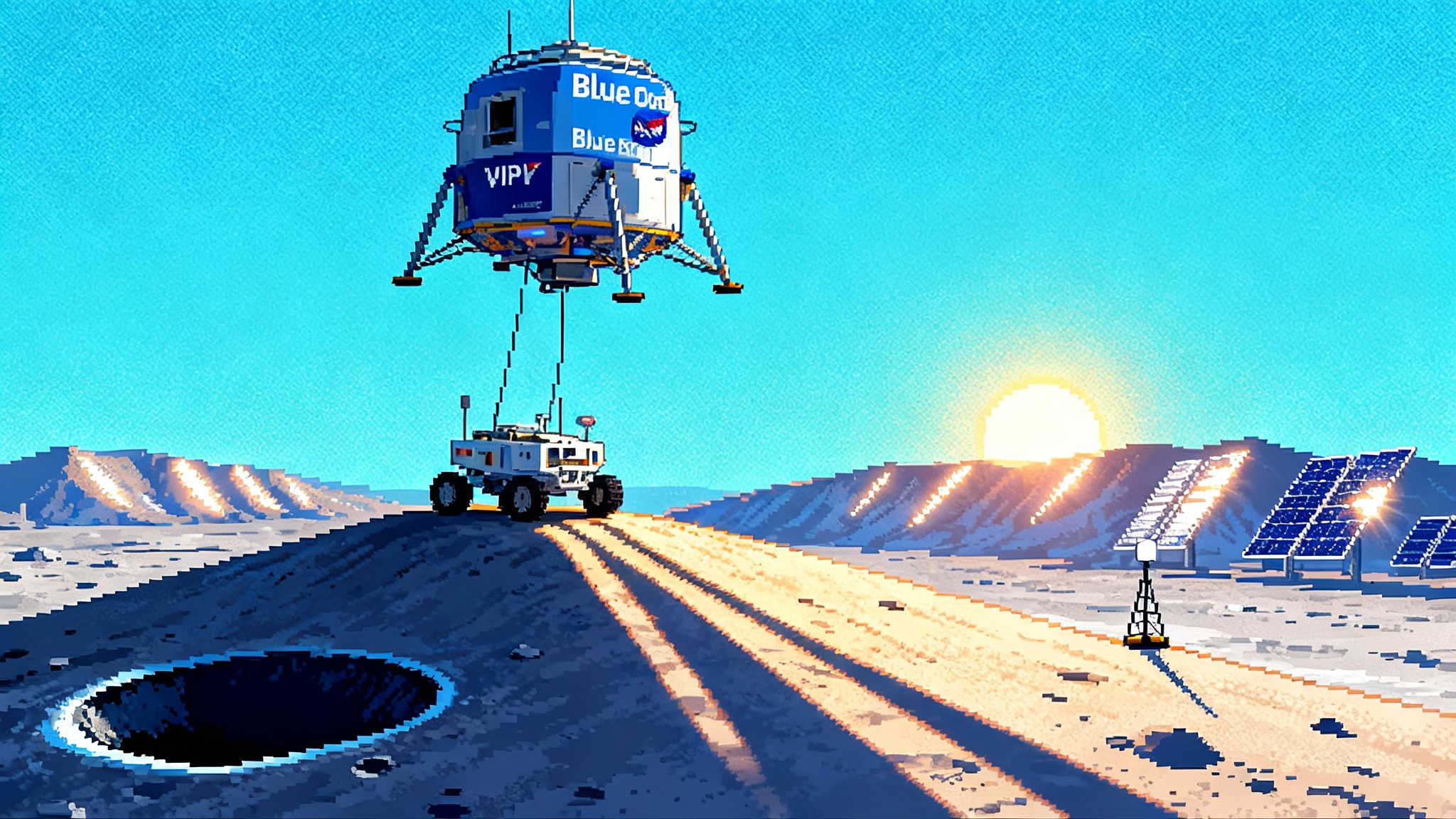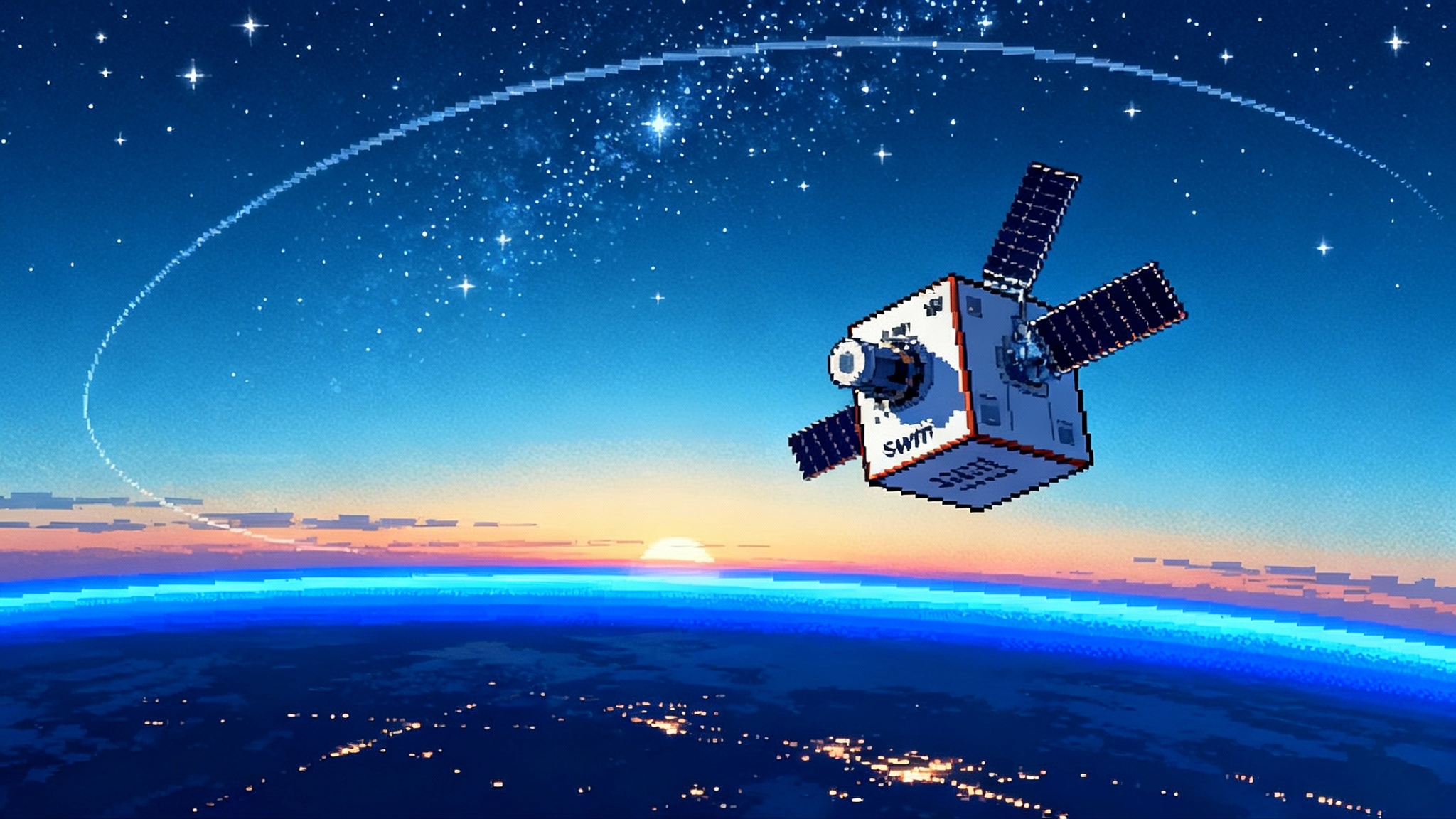New Glenn to Mars: ESCAPADE and the private interplanetary dawn
Blue Origin’s second New Glenn flight is set to send NASA’s twin ESCAPADE probes toward Mars. Pairing low cost smallsats with a commercial heavy lifter could reshape planetary science, enable real time Mars space weather maps, and set a faster deep space tempo through 2030.
The news: a private rocket, a Mars mission, and a narrow window
Blue Origin’s giant New Glenn is preparing for its second launch, and this time the payload is headed for Mars. NASA has opened media accreditation for the ESCAPADE mission as New Glenn’s Flight 2 approaches, placing a commercial heavy lifter at the heart of a government science shot to another planet. See NASA’s announcement in the NASA media advisory for ESCAPADE launch.
The setup is simple to describe and profound in effect: a pair of compact, relatively inexpensive spacecraft, built by Rocket Lab and led by the University of California Berkeley Space Sciences Laboratory for NASA, will ride a brand new commercial rocket that first flew in January 2025. If the countdown cooperates, ESCAPADE will begin a cruise to the Red Planet to map the electrical and magnetic weather around Mars in real time. The company’s growing role in NASA missions is also visible in the Blue Origin 2027 VIPER landing.
Why two small spacecraft on a very large rocket
Think of New Glenn as a chartered cargo ship with a huge hold, and ESCAPADE as two smart, rugged research boats tucked inside. Big volume up top lets engineers integrate hardware with fewer contortions. Generous performance gives planners more options: direct departures when the planets line up, or creative detours that still make the window. For a twin smallsat mission, the extra room and energy translate into schedule margin and design simplicity.
The two spacecraft are nearly identical. They fly the same instruments, share a common bus, and separate to capture the Martian environment from two vantage points at once. That dual view is the point. Space weather is a moving target. With only one probe you can miss the cause while you measure the effect. With two, you can watch a solar gust roll past and see, moments later, how it rips at the upper atmosphere.
ESCAPADE’s tool kit is compact and purposeful. Each spacecraft carries a magnetometer to trace magnetic fields, an electrostatic analyzer to sample ions and electrons, and a Langmuir probe to measure plasma density. The hardware fits on a small boom and a modest bus because electronics have become lighter and more efficient, and because years of heliophysics missions taught teams how to squeeze the most out of a few well chosen sensors. For background on the mission and instruments, see the official ESCAPADE mission overview.
How real time Mars space weather will actually work
Imagine two weather buoys in a choppy bay. One sits nearer the shore, the other farther out. A storm line approaches. The outer buoy registers a pressure drop and wind shift first. Minutes later, waves steepen at the inner buoy. From the timing and the difference between the readings you can infer how the storm is building and when it will hit the beach. ESCAPADE plans something similar in orbit, but with plasma and fields rather than air and water.
- The probes will sample magnetic fields and charged particles at different altitudes and local times. That separation turns snapshots into a sequence.
- When a burst of solar wind slams into Mars, the pair can watch the bow shock compress, then measure how the upper atmosphere responds.
- Over many events, scientists will build a playbook of cause and effect: which solar conditions drive the most atmospheric escape, which trigger the harshest space weather spikes near the planet.
For future crews, this matters as much as a surface weather forecast. A coronal mass ejection can flood space with energetic particles and twist magnetic fields. Astronauts transiting to Mars will need to know when to shelter and when it is safe to work. Assets at Mars will need to know when to pause sensitive operations. A two craft monitor in orbit can start to provide those alerts with context rather than just alarms.
The economics: shifting cost curves with a twin smallsat playbook
The traditional planetary mission model concentrates risk and money into a single flagship or a mid class probe designed to do everything and last forever. That approach produces extraordinary science but at a cadence measured in many years. ESCAPADE represents a different calculus.
- Standardized smallsat buses, in this case derived from Rocket Lab’s interplanetary Photon design, give teams a shelf of components with deep flight heritage.
- Twin spacecraft split the scientific load. If one fails, the other can still deliver a core data set. If both work, the pair unlock coordinated science unavailable to a single orbiter.
- Pairing these with a commercial heavy lifter introduces flexible delivery options. The rocket’s large fairing can house multiple probes without unusual deployment gymnastics. The performance margin supports alternate trajectories if the primary window tightens.
The financial outcome is not just lower price per mission. It is a different shape of investment. More shots on goal. More willingness to accept incremental risk, because missing an instrument or a campaign does not doom a decade of work. Agencies and universities can plan a ladder of missions rather than betting the cycle on one.
Why New Glenn’s second flight is a market signal
Flight 1 in January 2025 reached orbit and exercised Blue Origin’s Blue Ring platform, though the booster did not make its landing. Flight 2 attempts something more consequential. Putting two deep space probes on a new rocket is not just a technical milestone. It is a business milestone in a market long dominated by a few proven vehicles. On the competitive side, SpaceX’s cadence continues to rise, as seen in Starship Flight 11 progress.
If ESCAPADE departs cleanly, Blue Origin demonstrates an interplanetary capability with only two flights on the board. That changes bid sheets. It makes NASA’s Venture class contracts more competitive. It gives European and Asian teams another option for Mars, Venus, and small body missions that do not require the largest rockets on Earth but benefit from generous fairing volume and performance. It pressures providers to publish clearer interplanetary pricing and to invest in ground systems that make planetary launch campaigns feel routine rather than heroic.
Cadence through 2030: from events to pipeline
The past few years hinted at the shift. SpaceX flew NASA’s Europa Clipper on Falcon Heavy in 2024, a flagship riding a commercial platform. United Launch Alliance’s Atlas V delivered multiple planetary missions as that vehicle retired. Rocket Lab has turned small spacecraft and precision kicks into a business that reaches the Moon. New Glenn joining this mix means the market has two heavy commercial options for deep space work and one nimble small to medium platform with interplanetary ambitions.
What that unlocks through 2030 is not simply more launches. It is a re architecture of how we do planetary science.
- Formation flying becomes normal. Two or three small orbiters can bracket a phenomenon in ways a single large craft cannot.
- Target diversity improves. Low cost probes to secondary destinations can ride along during main planetary windows, then peel off for dedicated science.
- Data latency shrinks. With more assets in more orbits, the time from an event at Mars to a useful product on Earth drops from days to hours.
The practical outcome is a cadence that looks like Earth observation constellations rather than once in a decade flagships. There will still be flagships. But the heartbeat of the program will be many small hands gathering complementary data, uploaded and fused into models that planners and crews can use. For a related program level example, see NASA’s two track Mars sample plan.
What success looks like on launch day
For New Glenn:
- First stage ignition, ascent, and second stage performance that meets the Mars injection target. The booster may again attempt a droneship landing, but the real objective is accurate delivery to the planned trajectory.
- Fairing separation and separation events that are textbook clean. A smooth deploy is a market demo all by itself, because high volume fairings are selling points for delicate deep space payloads.
For ESCAPADE:
- Healthy signals from both spacecraft. That means power positive, thermal stable, and the ability to talk to the Deep Space Network.
- Early instrument checkouts that show clean personalities for each sensor. Early agreement between the two spacecraft on background plasma and field conditions sets the tone for dual point science.
For the marketplace:
- A new commercial vehicle with interplanetary credibility. That makes it easier for agencies to justify competitive awards and for startups to propose small probes, knowing a ride exists outside of one provider.
What a scrub would really mean
A delay is not just a slipped calendar line when you are aiming at Mars. Planetary mechanics are unforgiving. The window is tight, and missing it can push you to exotic trajectories or to the next major alignment.
If New Glenn scrubs late and misses the primary Mars corridor, there are still options that preserve mission value. Mission designers can stage at a halo around the Earth Sun Lagrange point to wait for a later departure. They can build in an Earth flyby to regain the right energy. Those paths lengthen the timeline but create their own science. Space weather near the Sun Earth line is rich. A pair of heliophysics class sensors loitering there for months could collect valuable context for what later happens at Mars.
For the interplanetary marketplace, a scrub would underline two realities.
- New entrants are still learning. Early fleet rockets need time to work through engine restarts, control margins, and range choreography. That is normal. Providers that acknowledge the learning openly and show corrective actions earn trust.
- Customers must design to flexible windows. That means dry mass margins that permit alternate trajectories, propellant accounting that avoids costly de fuel and re fuel cycles, and ground software ready to upload new cruise timelines without a rewrite.
The deeper mechanism that resets cost and capability
The pairing of twin smallsats and a commercial heavy lifter works because it reduces three kinds of friction.
- Integration friction. A big fairing with modern clean room practices reduces handling steps and custom adapters. Less bespoke hardware saves money and reduces risk.
- Trajectory friction. Extra performance means you can trade propellant for schedule. With a little more delta v you do not need every sliver of the optimal window, and you can reach useful science orbits faster once you arrive.
- Organizational friction. Pre negotiated service contracts, such as NASA’s venture class launch services, turn a bespoke procurement into a menu. That simplicity matters when a university lab is the prime with a lean team.
The result is a platform approach to planets. Hardware, software, and operations become modular. That is how cadences accelerate without exploding budgets.
What to watch next
- Hot fire and wet dress results at Launch Complex 36. If those are crisp, the probability of a clean countdown rises sharply.
- Blue Origin’s updates on first stage recovery. A successful droneship return would validate the reuse path that underwrites long term launch pricing, even though ESCAPADE’s success does not depend on it.
- Dual spacecraft checkout timelines. The sooner both probes demonstrate stable attitude control and clean instrument data, the sooner the team can pivot from survival to cruise science.
For teams planning missions, the action items are specific.
- Design for two. If your science can be split, a twin or leader follower architecture can multiply value. Keep the buses as identical as possible to simplify spares and operations.
- Budget for trajectory flexibility. Add the thermal and power margins you need to tolerate a longer cruise or a parking orbit if the main window slips.
- Build a ground pipeline for near real time products. Space weather maps that matter to crews are not papers. They are dashboards. Invest early in the software to ingest, fuse, and publish.
The bigger picture and a closing thought
A decade ago, a mission like ESCAPADE on a rocket like New Glenn would have been science fiction for schedule and budget planners. Today, it is a practical bet. A private company supplies the lift, a smallsat specialist supplies the spacecraft, a university leads the science, and a federal agency stitches the pieces together with contracts designed for speed and competition.
If Flight 2 goes as planned, New Glenn and ESCAPADE show how we will do much of deep space this decade: smaller, smarter, in pairs and trios, on rockets that fly often. The interesting part is not only new data about how Mars sheds its air into space. It is what that data represents. Two compact orbiters, paid for at a fraction of legacy costs, catching the same gust of solar wind from different angles so we can prepare crews and hardware for the trip to come.
That is the dawn of a private interplanetary era. Not a slogan, but a set of choices. Pick modular buses. Pair them up. Fly on rockets that compete. Build ground tools that turn streams into decisions. Do it again the next window. When we look back in 2030, the day two small probes rode a new commercial heavy lifter toward Mars may read like the moment planetary science became a pipeline rather than a parade.
